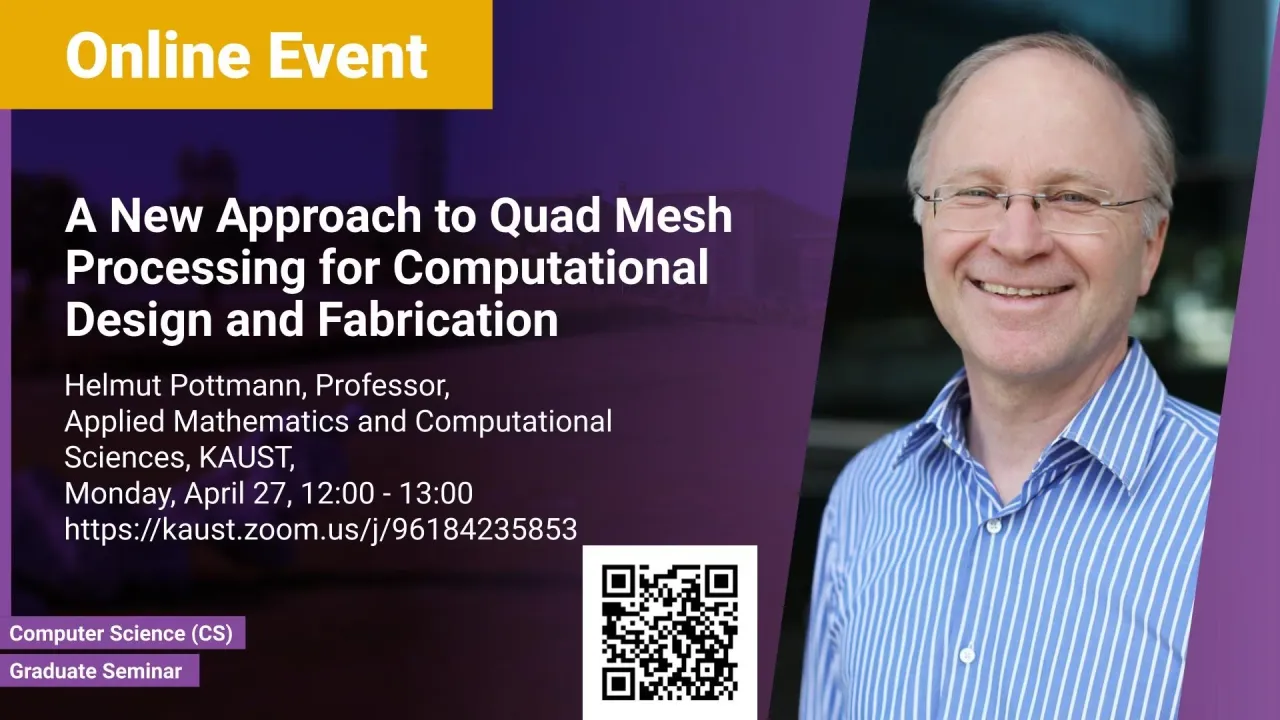
A New Approach to Quad Mesh Processing for Computational Design and Fabrication
In this talk, we will discuss a new way of computing with quad meshes. It is based on the checkerboard pattern of parallelograms one obtains by subdividing a quad mesh at its edge midpoints. The new approach is easy to understand and implement. It simplifies the transfer from the familiar theory of smooth surfaces to the discrete setting of quad meshes. This is illustrated with applications to constrained editing of 3D models, mesh design for architecture and digital modeling of shapes which can be fabricated by bending flat pieces of inextensible sheet material.
Overview
Abstract
Quad meshes are a major representation of curved surfaces appearing in all kinds of applications from computer animation, to digital design, engineering, and fabrication. In this talk, we will discuss a new way of computing with quad meshes. It is based on the checkerboard pattern of parallelograms one obtains by subdividing a quad mesh at its edge midpoints. The new approach is easy to understand and implement. It simplifies the transfer from the familiar theory of smooth surfaces to the discrete setting of quad meshes. This is illustrated with applications to constrained editing of 3D models, mesh design for architecture and digital modeling of shapes which can be fabricated by bending flat pieces of inextensible sheet material.
Brief Biography
Helmut Pottmann is a professor of AMCS and CS at KAUST and founding director of the Visual Computing Center (formerly Geometric Modeling and Scientific Visualization Center). He has had faculty positions in the US and in Germany and has been a Professor of Applied Geometry at TU Vienna since 1992. His research interests are in Applied Geometry, Visual Computing and most recently in Geometric Computing for Architecture and Manufacturing. He is a Fellow of SIAM and received a number of awards including the Eurographics Outstanding Technical Contributions Award, the Bezier Award of the Solid Modeling Association and the John Gregory Award for fundamental contributions to geometric modeling.